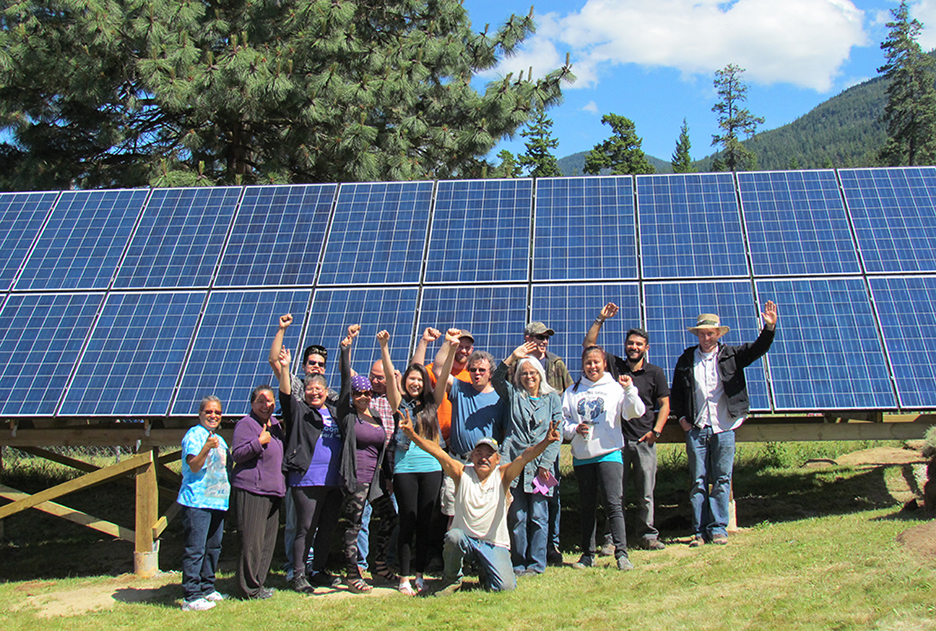Across British Columbia and Canada, First Nations communities are taking necessary steps toward energy independence, environmental care, and long-term sustainability by using solar energy. At Riverside Energy Systems, we’re proud to support these efforts by providing clean, efficient, and affordable solar solutions designed to meet community needs.
From reducing diesel dependence to lowering electricity bills, solar panel systems are providing real value and a brighter future for Indigenous communities. Here’s how.
Energy Independence and Community Empowerment
Many remote First Nations communities still depend on diesel generators or faraway energy grids. These systems can be unreliable and expensive. Solar energy offers a solution that enables communities to generate their own power on their own land. But with solar panel systems, communities gain control over their energy production, decrease dependence on fossil fuels, and pave the way for self-sufficiency. For example, the Ulkatcho First Nation is set to cut diesel use by 64% through Canada’s largest off-grid solar project, saving 1.1 million litres of diesel annually.
Long-Term Cost Savings
Electricity in remote areas can cost two to three times more than in urban centers. Over time, solar systems significantly lower utility bills, especially when combined with energy storage (batteries) to store power during peak sunlight hours. Many First Nations communities are eligible for federal and provincial rebates or grant programs that help offset the initial costs, making solar installation more accessible than ever.
Job Creation and Economic Opportunities
Solar projects often require community participation, planning, installation, and maintenance. This creates opportunities for training, jobs, and supporting local businesses.
Did you know?
Some Indigenous communities have established their own solar cooperatives and training programs, supporting long-term economic growth and skill development. Projects like the Duchess Solar facility (majority-owned by Cold Lake First Nations) and the Tilley Solar Project (owned in part by Alexander First Nation) are creating jobs, building skills, and generating long-term revenue streams for their communities.
Environmental Leadership and Sustainability
Solar power is clean, renewable, and produces zero greenhouse gases. First Nations have long been custodians of the land, and adopting solar energy aligns with Indigenous values of environmental stewardship and responsible resource use; and by switching to solar energy, communities can help fight climate change and conserve natural ecosystems for future generations.
Community-Led Energy Planning
When solar energy systems are introduced, they’re more than just technical projects; they’re community initiatives. Solar installations promote open discussions about long-term energy goals, sustainability, and community development. Most importantly, we work closely with Indigenous leaders, Elders, and youth to co-create energy solutions that reflect the values and needs of each community. As renewable energy projects grow, ensuring Indigenous participation and equitable benefit-sharing is critical, as emphasized by Reuters commentary on Indigenous peoples in the energy transition.
In conclusion, at Riverside Energy Systems, we believe that clean energy should be accessible to everyone. We’re committed to walking alongside First Nations communities on the journey to energy independence, sustainability, and prosperity.
We’ve completed over 50 solar energy projects with First Nations communities across British Columbia. You can check out some of our first nations projects. Our team also provides integrated solar installation and maintenance training to community members in partnership with Thompson Rivers University, Nicola Valley Institute of Technology, and British Columbia Institute of Technology. Whether it’s a rooftop system for a community center or an off-grid setup for a remote village, our team is here to support your vision from consultation to installation and beyond.
To learn more about how solar power generation can benefit your community, reach out to: Layne Clarke, Community Solar Liaison (250) 410-4344 | layne@riversideenergy.ca










.webp)
.webp)
.webp)
.webp)

